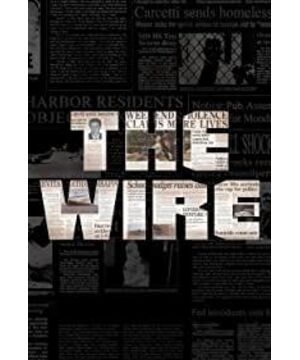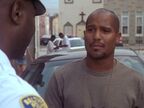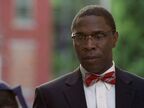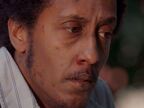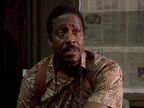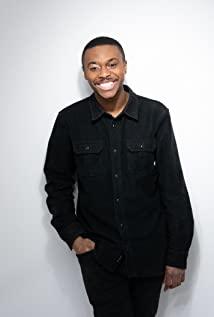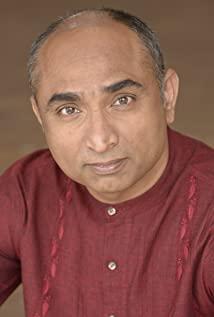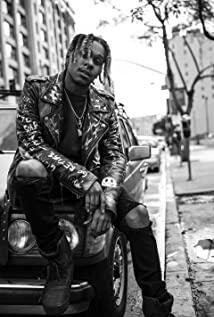But the main resistance does not come from drug cartels, but from the inside, the upper levels of the police station and the city hall. As the case progressed, Lester and others began investigating the Barksdale Group’s money laundering methods and the flow of funds. They searched for Barksdale’s companies in the company registration office (which is estimated to be similar to my country’s Industrial and Commercial Bureau) and the municipal land registration department. Pap's estate. Leicester even went to the Baltimore city board of elections (Baltimore city board of elections) to look up all political donations in the city’s elections to find out whether Barksdale had colluded with government officials. The results of the investigation are astonishing. The Barksdale Group's daily income is close to 60,000 US dollars, and its annual income is conservatively estimated to be around 25 million US dollars. After deducting 20% of operating costs and losses, one month’s net income is About one million dollars. Barksdale operates four leather bag companies, including funeral homes, apartment buildings, and strip bars, for money laundering. What's really scary is that Barksdale's political donation for one month is as high as $75,000, and this is only donated through legal channels. As for illegal bribery, it is difficult to say exactly how many. Because of these political donations, Barksdale won the asylum of certain politicians, and at the same time was able to obtain some valuable business information. For example, by bribing government officials, Barksdale learned that the west side of the downtown business district was going to be demolished, so it was there. A large number of vacant facades and warehouses were purchased.
But as Lester, Daniels and others have said many times: "The real tricky thing is: when you trace drugs, you can find drug users and drug dealers; when you start to trace the direction of money, you don’t Knowing whose head will be found." (Lester: And here is the rub: u follow drugs, u get drug addicts and drug dealers; But u start to follow the money, and u don't know where the fuck it's going to take u.) The investigation of the task force made Burrell and others sleepless, for fear that they would accidentally anger which high-level government officials. In an accidental arrest, Gemma and McNulty discovered that the driver of the state legislator and vice chairman of the budget committee Clay Davis (who had a lot of roles as a representative of corrupt politicians in later seasons) The high-rise area took away 20,000 U.S. dollars and brought it back to the police station for questioning. As a result, Burrell and others forced Daniels to release and pay back the money.
Whether it is for the purpose of maintaining the face of the police or to prevent offending high-level officials, Burrell and Rawls must promptly interrupt the investigation of the task force. Therefore, Burrell tried to stop the eavesdropping operation before the eavesdropping expired (Ferren approved the eavesdropping for 60 days). Rawls, on the other hand, tried to swiftly file a case to disrupt the investigation of the task force. Before McNulty and Bunker investigated an old murder case, the bullet trajectory analysis found from the scene indicated that the suspect in the murder case may still be the murderer in the other two cases of the Murder Department (Rawls director). According to witnesses, DiAngela once appeared at the victim’s residence on the night of the murder. With this meager evidence, Rawls eagerly plans to bring DeAngela to court with three murders. Rawls knows very well in his heart that such weak evidence is difficult to pass a grand jury review. But as long as the charges are raised, it is good to pass the grand jury. Even if the grand jury decides not to prosecute, he can also close the case and maintain the police's detection rate (this involves the performance evaluation methods of the US police, not special clear). At the same time, Di is also the most important eavesdropping and investigation target of the task force. As long as he prosecutes him, the investigation of the task force can be interrupted. This is a strategy of killing two birds with one stone. At the most critical moment, Daniels stood up, fought hard before Burrell, and saved the fate of the task force. However, the price is also huge. Daniels’ future is over here, and because Burrell has caught Daniels’ pigtails, Daniels is in danger of losing his job or even going to court at any time.
Here is a brief introduction to the grand jury system in the trial of criminal cases in the United States. The small jury is generally familiar. It consists of twelve people selected at random. They are ultimately responsible for the conviction in the criminal trial. That is, the verdict of "guilty or not guilty" (guilty or not guilty) is small. It is made by the jury, and in a criminal case, the opinions of twelve people, whether guilty or not, must be unanimous. Civil cases are relatively loose, requiring only a majority. Therefore, the final conviction of the case is made by the jury, not the judge. The judge is responsible for the sentencing and presiding of the trial process, but not the conviction. This is equivalent to the introduction of a "democratic" mechanism in judicial trials, and it is conducive to training the general public's legal awareness and legal capabilities. It is an ancient tradition and a major feature of the common law system (of course there are also drawbacks).
The grand jury is not the same as the minor jury. (The following content is slightly modified from the speech of the US Consulate in Shenyang) The grand jury has two functions, one is the role of accusation, and the other is the role of investigation. According to the U.S. Constitution, all felonies in the U.S. federal system (imprisonment for more than one year) can only be prosecuted by a grand jury. In the U.S., the case is rarely sentenced to less than one year in prison, so almost all cases must be prosecuted. Only the consent of the grand jury can prosecute. The methods for selecting candidates for the grand jury and the minor jury are similar. They must be American citizens. After a random selection process, all qualified American citizens can serve as members of the grand jury. The so-called qualification is that one has no criminal record. What random method is used? One uses the list of elections, and the other uses the list of driver’s licenses. It is chosen in a random manner. Let this person come to the court to see if this person is capable of doing it, maybe because of work or family relations he is not capable of doing it. . The grand jury has 16 to 23 members. It is made up of 23 people, but 16 people must be present to hold a hearing. To prosecute or not to prosecute requires 12 people to agree, which is different from a small jury, which requires 12 people to agree on a conviction. The power of the grand jury is only the right to sue, and its requirements for making a decision are not as strict as the petty jury. The standard for the grand jury to make a decision is probably the standard of guilt. The English is probable cause. There is no accurate translation, that is, whether there is evidence that this person is probably guilty. This is much lower than the standard of conviction. The standard of conviction is to exclude all reasonable doubts (attention!!!).
The grand jury also has an investigative role. It collects some special documents. The police cannot decide on their own and need a subpoena from the grand jury. During the investigation stage, the collection of documents concerning citizens’ privacy rights requires a subpoena order from the grand jury. In fact, this right is in the hands of the prosecutor, because the hearing and investigation of the grand jury are all directed by the prosecutor. Because the grand jury is composed of ordinary American citizens, there is no legal knowledge, no professional training in investigating, the right of the grand jury should be to supervise the investigative work of the prosecutor, supervise the prosecution work of the prosecutor, the prosecutor himself cannot decide to prosecute a certain person. Someone, if he wants to sue, he must give the evidence to the grand jury for trial. At the same time, the police have the right to question the witness, and the witness also has the right to refuse to answer the police's questions. When anyone is questioned by the police, he or she can answer or not, but what if the witness does not answer? Don't you just give up? Another procedure is to force witnesses to testify, that is, the prosecutor applies to the judge to issue a special order, also known as an order for testimony, or a privilege order. The "right to silence" in the United States is a short name, the right not to be forced to prove one's guilt, not an absolute right to silence. If the prosecution agrees that a person’s testimony is not used to prove his guilt, it does not violate the right not to be compelled to prove himself guilty and can obtain his testimony. Under this circumstance, the prosecutor can apply to the judge to issue a special order. This order has three articles. The first is that the witness must testify. Failure to testify will constitute a crime of contempt of the court; the second is that his testimony cannot be used Proving his own guilt can only be used to prove the guilt of others; the third is that if he abuses this right to make perjury, he will also be legally liable. If he does perjury, his testimony can be used to prove that he has committed perjury. In this regard, because the police are still in the investigative stage, the police are helpless if they do not testify, and the prosecutors themselves cannot force the witness to testify. The prosecutor can pass legal procedures to request the court to issue a special order to order the witness to testify before the grand jury. .
View more about The Wire reviews


